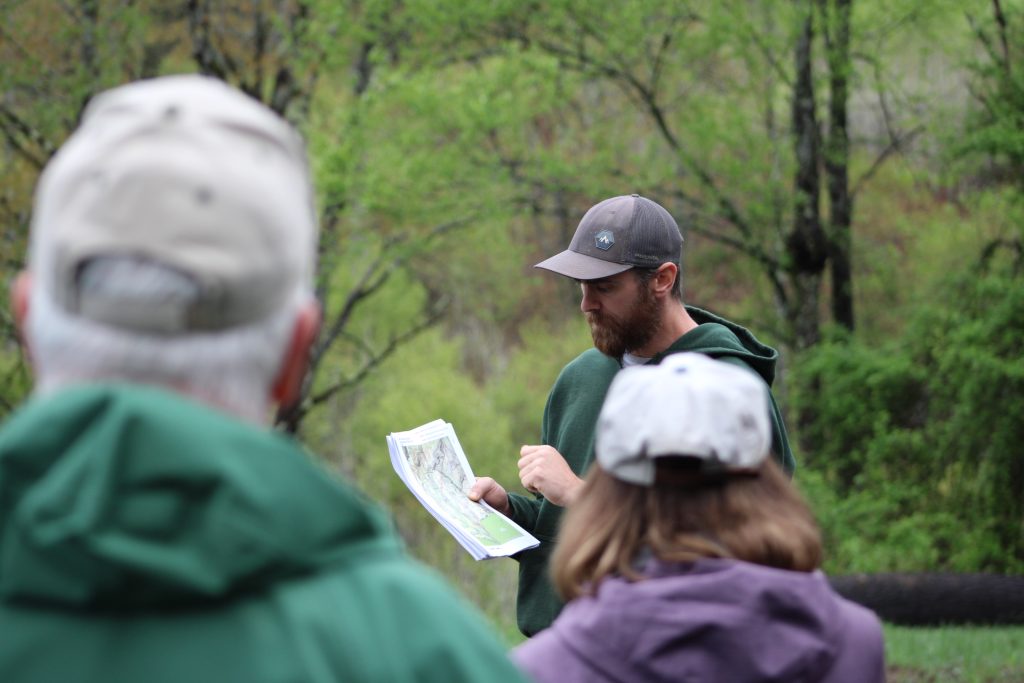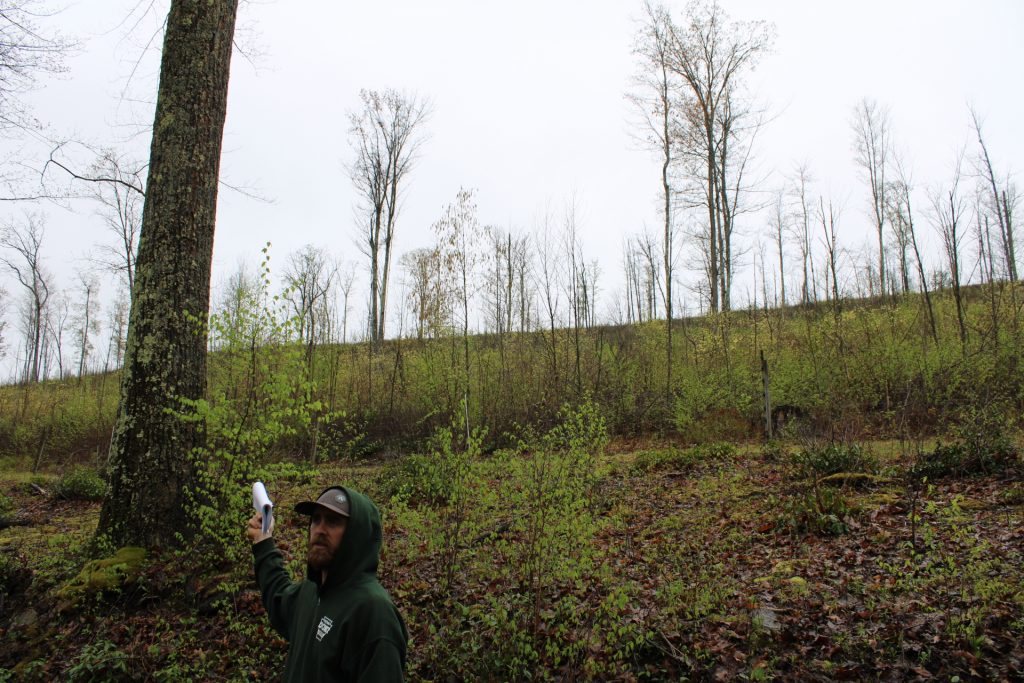Pennsylvania State Forest Tour Demonstrates Successful Wildlife Management Practices
EDGEFIELD, S.C. — The Pennsylvania Department of Conservation and Natural Resources Bureau of Forestry offered their annual habitat and forestry management tour for partners and landowners for the first time in five years. The tour showcased habitat enhancement projects the NWTF helped fund within the Susquehannock State Forest.
Hosted at Ole Bull State Park — a 132-acre park within the Susquehannock State Forest — over 30 attendees witnessed the success of habitat opening projects that benefit ruffed grouse, woodcock, elk and wild turkey, among other non-game species. Nearby landowners learned about the management being done on the state forest, and attendees were excited to get out into the woods to talk about wildlife, forestry, land management and plans for the upcoming hunting and fishing seasons.
The NWTF was the first organization to provide funding for habitat management projects in the state forest, in 1987. Since then, the NWTF has consistently partnered with the state forest for the benefit of wild turkeys, outdoor recreationists and overall ecosystem health.
“The NWTF helps us through funding, giving us support and allowing us to get more work done on the ground,” said Eric Monger, Pennsylvania DCNR state forester. “Most of the money we request is for seed, herbicides and herbaceous opening projects to create and maintain early successional habitat, which we wouldn’t have been able to do otherwise. We’re lucky to have such a strong partnership.”

The first stop on the tour was to one of many habitat openings at an aspen regeneration project site. DCNR foresters have been applying herbicides to prevent unfavorable vegetation from overtaking the area, allowing for aspens to regenerate. An aspen ecosystem produces an abundance of forage for wildlife species and creates early successional habitats, which promotes biodiversity. The NWTF provided funding for herbicides and pollinator friendly seed mixes for this site.
Tour attendees also visited a recent salvage harvest, which is a type of timber harvest that is an effective tool for removing sick trees from the landscape while recovering as much monetary value from the trees before deterioration.
In recent years, forests in the Northeast have been battling pests and diseases such as oak wilt, emerald ash borer, cherry wilt, gypsy moth, hemlock woolly adelgid, beech bark and beech leaf disease. The state forest also conducts timber harvests with the intention of improving forest health by opening the forest floor for new saplings and pollinator friendly plants that can be utilized by more wildlife species.

Foresters also showcased a site that underwent a prescribed burn in the spring of 2023. While foresters explained why it is important to use fire to manage the landscape, attendees were able to see firsthand how the landscape has changed after fire is prescribed. Staff also offered a behind-the-scenes look at the burn plan they had to create before this burn could take place. On this specific site, oak regeneration was overtopped by birch, so the burn eliminated birch.

The final stop of the tour was to an herbaceous opening and food plot created for wildlife. Over 200 acres of land is maintained with spring seed mix, which includes buckwheat, sunflower, oats, clover and warm season grasses.
Attendees saw firsthand the success of the habitat opening, as two young elk bulls grazed in the distance as the tour group arrived at the site.

As Ben Porkolab, the education and outreach coordinator for the Keystone Elk Country Alliance, presented on the history of elk populations in Pennsylvania, woodcocks flew over the tour group and ruffed grouse were drumming in the tree line.
“The Susquehannock State Forest has a had a great partnership with the NWTF over the years starting with Troy Stimaker and continuing with Eric Monger,” said Mitch Blake, NWTF district biologist. “Susquehannock staff’s ability to pool funding from partners and put it on the ground for wildlife opening management is unique and very beneficial not only to wild turkeys, but other wildlife species.”
